From The Classroom to The ‘Real World’
Washington Leadership Academy and Summit Public Schools share how student internships can build interpersonal skills and career exposure. See how.
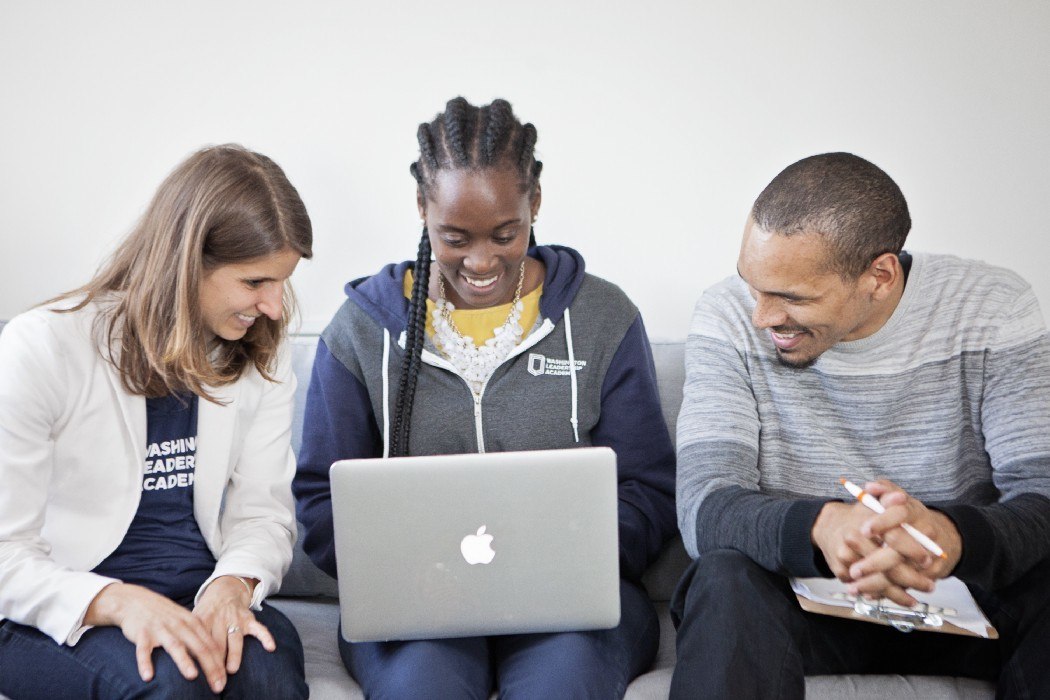
By Lucretia Witte, Director of Expeditions, and Amy Sandoz, Director of Diploma Research, at Summit Public Schools.
Washington Leadership Academy and Summit Public Schools share how student internships can build interpersonal skills and career exposure.
Amanda, a high school junior, was the lucky student to be selected for an internship in her Congresswoman’s office. She was learning a lot from the adults and the other interns until the day she showed up 15 minutes late with a bag of McDonald’s in her hand.
She was fired that day. And that was the day she learned most of all.
Students Want More Exposure to Potential Careers
In recent XQ focus groups across the country, students have been asking for more exposure in high school to careers they might pursue after college. Students have also been requesting more opportunities to pair real-life work experience with classroom instruction. In a 2012 survey, employers noted that they place a heavier emphasis on internships and work experience over college majors, coursework, and GPAs in hiring decisions. High schools can play an important role in meeting employer needs by offering robust internship programs that further enrich their students’ high school experiences. Yet, high schools across the country often struggle to offer these programs in a way that ensures every student has at least one meaningful internship experience.
In March 2019, Washington Leadership Academy, a high school in Washington, D.C., and Summit Public Schools, a network of public charter middle and high schools in Washington and California, participated in a knowledge exchange to share best practices, resources, and ideas on how to ensure every student accesses high-quality internships as part of their high school experience. The focus of this exchange was to learn what types of internships each organization offers to their students and how they are structured, as well as the staffing curriculum interventions required to ensure students gain essential interpersonal skills.

Internships at Washington Leadership Academy
At Washington Leadership Academy, students have prestigious internships once per week on Fridays, for the second half of their junior year. Students can be found at the National History Museum, stationed at the White House Visitor Center, and at local start-ups, for example, delivering kid-friendly programming, reviewing grant spending, and interacting with people from all over the country.
Preparing for Internships
To prepare for internships, students spend Fridays during the first half of the school year getting matched to and then prepared for their internship. They move through a guided sequence where they:
- Learn about the overall internship experience, the desired outcomes, and the process for matching to their internship
- Review internship opportunities, decide on their top choices, prepare their resumes, and apply
- Learn soft skills, such as what professional business attire means and looks like, and how to write professional emails, interview, and network
- Interview with the internship providers and receive a match
- Hear from working professionals about a variety of college and career paths.
The highlight of the sequence is the actual matching process. Students at WLA apply to internships from a list, interview with several internship providers, and then receive a notification of which internship they received. Just as in real life, some students are thrilled with their match, while others may experience disappointment and learn about managing their emotions through this process.
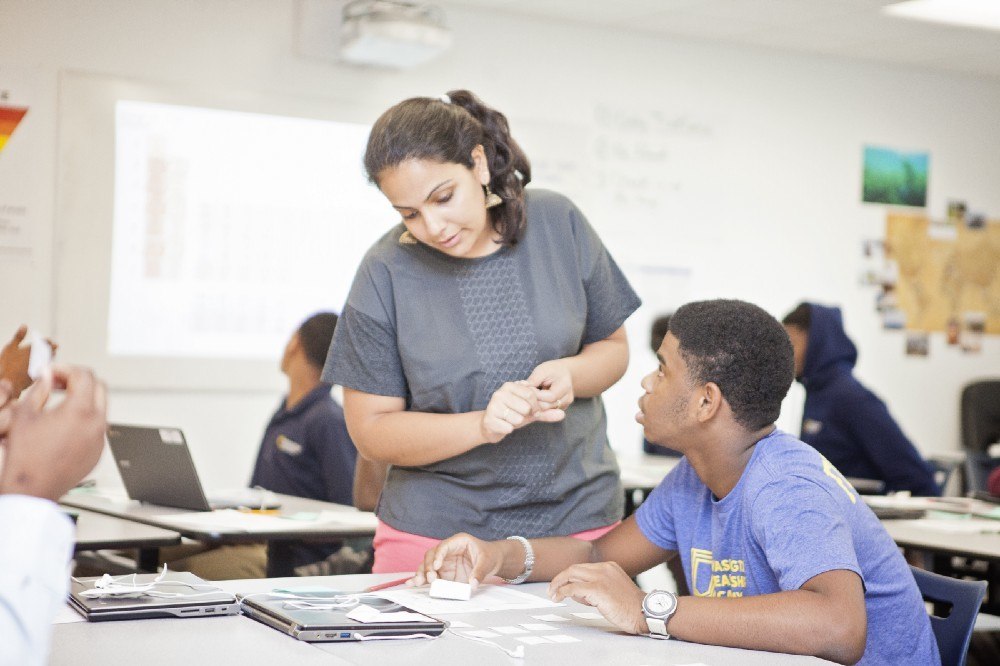
Experiencing Internships
For the second half of the school year, students spend Fridays at their internship placements. Instead of reporting to school in the morning, students report directly to their new workplace and check in with their supervisor. Students use the DC Metro (which is free for students at certain times of the day) to travel to their internships, which stretch across many different wards of the city.
To ensure students are developing professional and interpersonal skills along the way, they participate in a formal feedback process. The internship provider completes a weekly survey on the student’s performance. Then the student, the student’s internship advisor from WLA, and the internship provider discuss the feedback together.
Should the student not perform well at the internship, or engage in unprofessional behavior such as not showing up or not completing the work, students can be “fired” from their internship – another real-world simulation and opportunity for the student to learn an important lesson. At the time of our visit, at least one student had been fired from their internship. That student then completed a research project for the rest of the year while their classmates continued on with their placements.
Staffing Requirements
To manage this internship experience for roughly 100 11th grade students, WLA engages several staff members:
- A dedicated internship manager. This full-time position is responsible for sourcing the 100-plus internships at the start of the school year, managing internship provider communications, and designing the scope and sequence of the interview prep sequence at the beginning of the year. Additionally, this person coaches the internship advisors on how to best support students..
- Internship advisors. Eleventh-grade teachers split their time: Monday through Thursday, they are core instructional teachers at school. On Fridays, they are internship advisors for about 10 students each. Advisors travel to each student’s internship location to meet with the student and the internship provider as a part of the formal feedback process (as discussed above).
Internships at Summit Public Schools
At Summit, 10th and 12th graders have the opportunity to pursue either internships or independent studies as an elective course. In internships, students work at a business, office, or organization aligned to their interests. In independent study, students work individually or in small groups towards a goal they have designed, such as writing a novel, making a guidebook to college, or crafting a photo portfolio. Both experiences are meant to give students a chance to apply their passions in the real world.
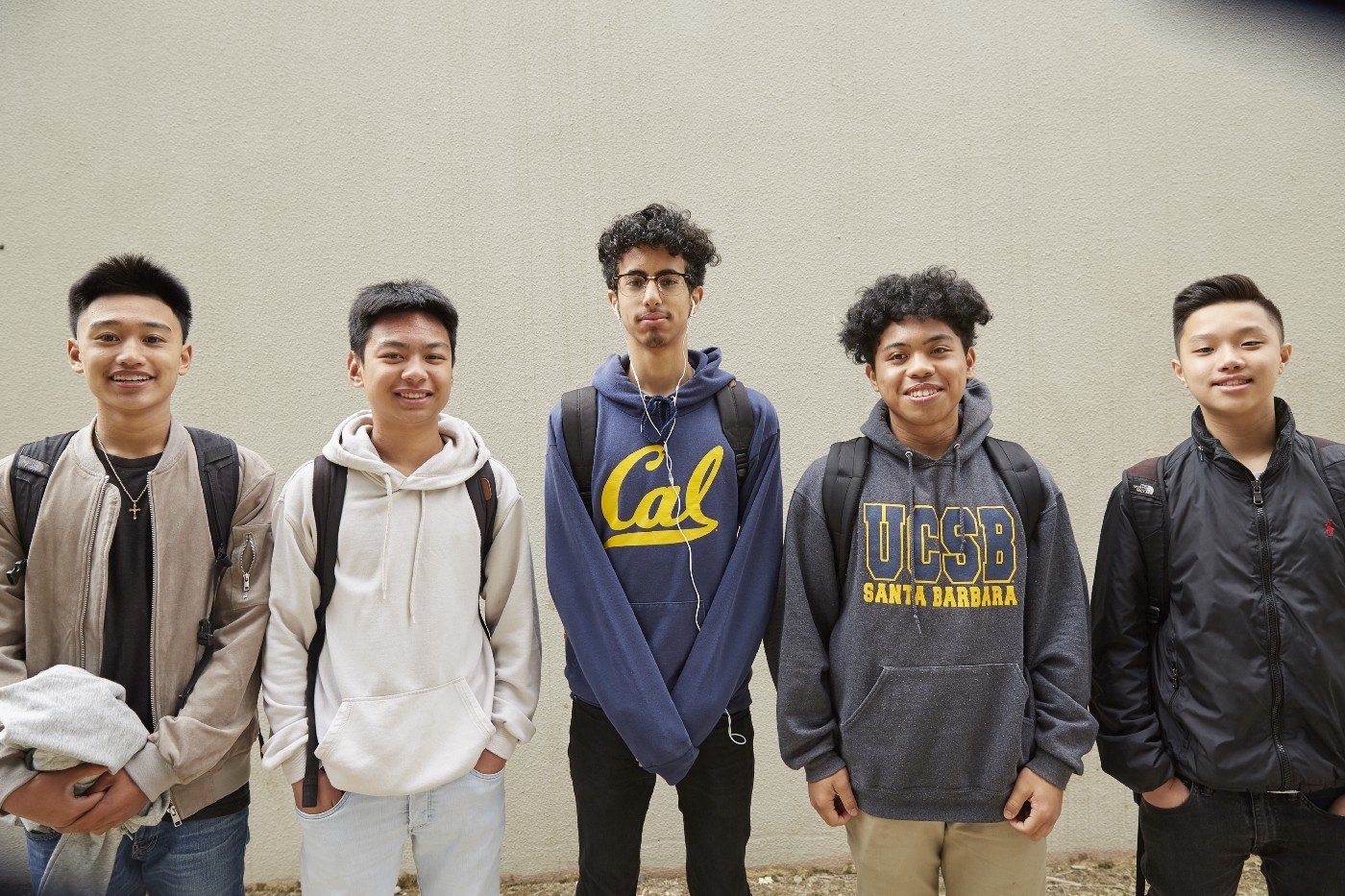
Preparing for Internships
Every spring, internship coordinators present next year’s available internship placements to rising 10th and 12th graders. During the eight weeks of Expeditions, Summit’s elective time, students either may take elective courses on campus or enroll in an internship or independent study.
Students drive the enrollment process in internships or independent study after the initial spring launch. Students are able to access the database of past internship hosts and are responsible for reaching out to employers, introducing themselves, sending their resume, and setting up interviews. If they cannot find an internship of interest independently, an internship coordinator works with the student to find a suitable placement.
Students pursuing independent study secure an advisor with subject matter expertise and then craft a yearlong proposal, including the final product they will create by the end of the year and the learning objectives they plan to complete each two-week Expeditions elective cycle.
Summit believes that this student-driven application and enrollment process teaches students initiative and the self-advocacy needed for success in the job market, as well as determining their course of study in college.
Meanwhile, one Independent Learning Coordinator per campus (also an Expeditions teacher at that school) supports students in building outreach skills, researching and identifying internship hosts of interest, and refining independent study proposals to be specific and rigorous. Students receive training on submitting “timecards” that the school files at the end of every two-week cycle used to claim attendance for the students’ time off campus.
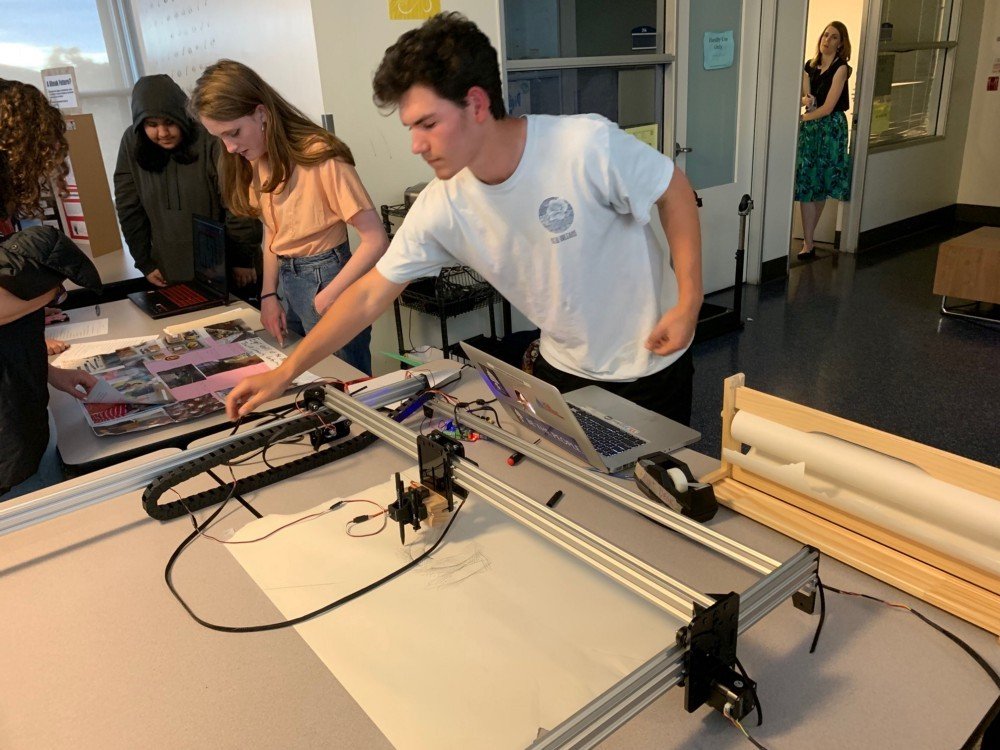
Experiencing Internships
Students conduct their internships throughout the school year, for a total of eight weeks, during Expeditions. The eight weeks are broken into two-week chunks (i.e. an Expeditions round) once a quarter.
Students do a reflection at the end of each round on their internship or independent study experience so far. Independent Learning Coordinators use those reflections to assess student self-awareness and also identify any barriers that have arisen for the student to do their best work. Independent Learning Coordinators do site visits over the course of the year and mediate between student and supervisor if challenges arise.
As our program has been around since 2013, we have had the opportunity to navigate some of the challenges of a student-driven program, such as the nervousness that sometimes hold students back from reaching out to employers and requesting an interview. Other challenges include designing their own learning experience, remembering to get signatures on the contract document they must complete, or remembering to inform their supervisor if they need to stay home sick. We have built scaffolds to support students in this process; however, students are the ones who must complete the tasks – an important lesson in real-world accountability.
In some cases, if a student is not showing up, not performing well at their internship, or not turning in their timecard, we have to “fire” them. We need to maintain good partnerships with our employer partners for future years and students’ absences have very real funding consequences for our schools. Students who are fired shift into an on-campus Expeditions course where they have to make up the missed work from the year in order to pass the class.
Like the approach taken at WLA, although students may be frustrated after getting fired, this is an important and low-stakes way for students to experience real-world consequences and learn from them.
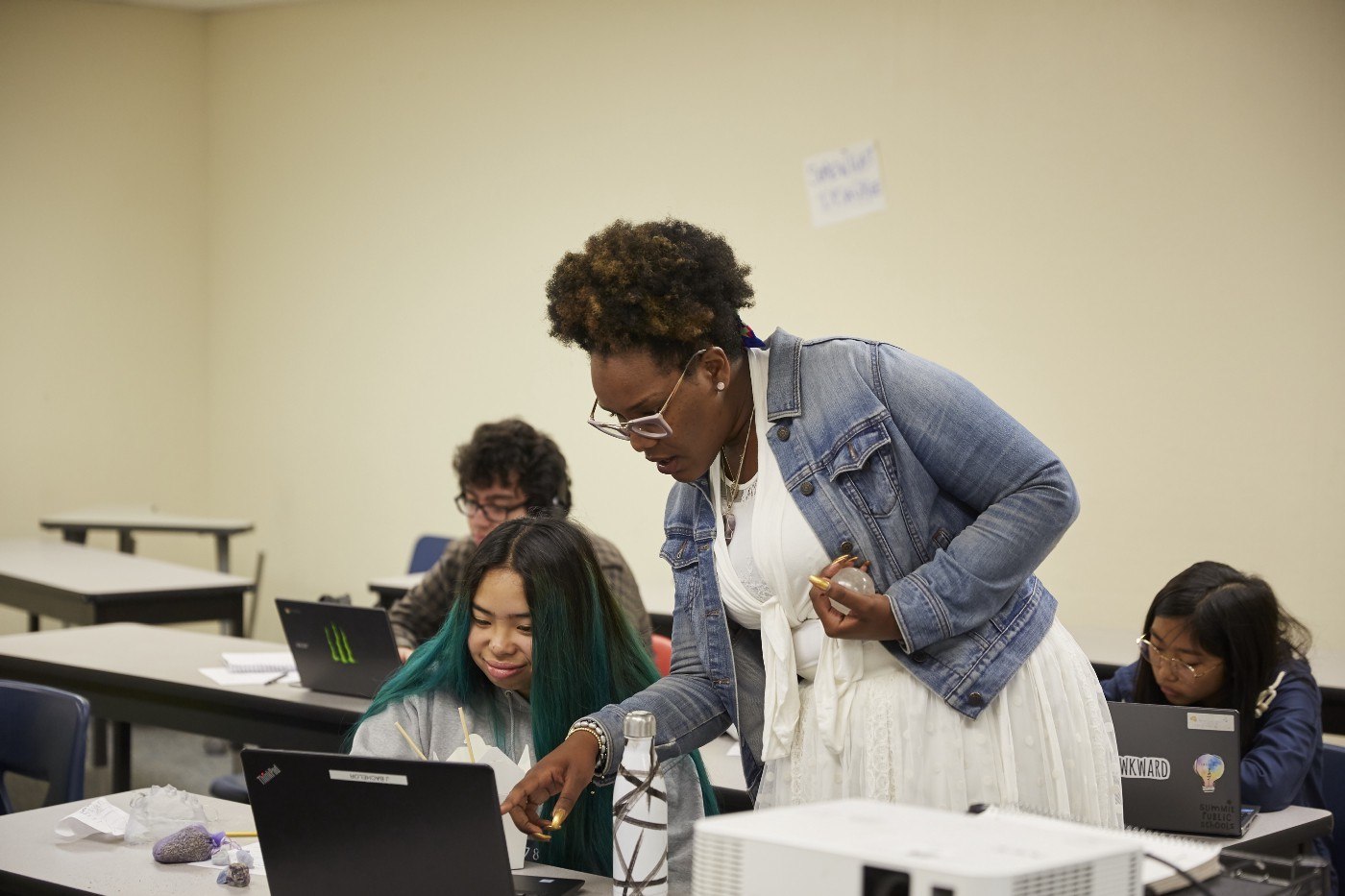
Staffing Requirements
To implement this internship and independent study approach across Summit’s eight high schools, we leverage the time of our Expeditions teachers. Most Expeditions teachers teach courses all day, every day, but eight of our veteran teachers teach two fewer classes and support a caseload of 60 internship and independent study students.
Conclusion
Internships are a powerful experience for students and employers alike and can set students up for future career success. High schools can be a supportive, low-stakes place to introduce students to careers and coach them through the interpersonal skills and inevitable missteps that come with a first job. While internships take resources and time on the part of the high school, both WLA and Summit have found ways to make it work well within their respective contexts. We hope these examples give you fresh ideas for incorporating internships at your own schools or networks.
Invitation for Feedback
How are you structuring internship and enrichment experiences to promote real-world interpersonal skills for students at your school?









